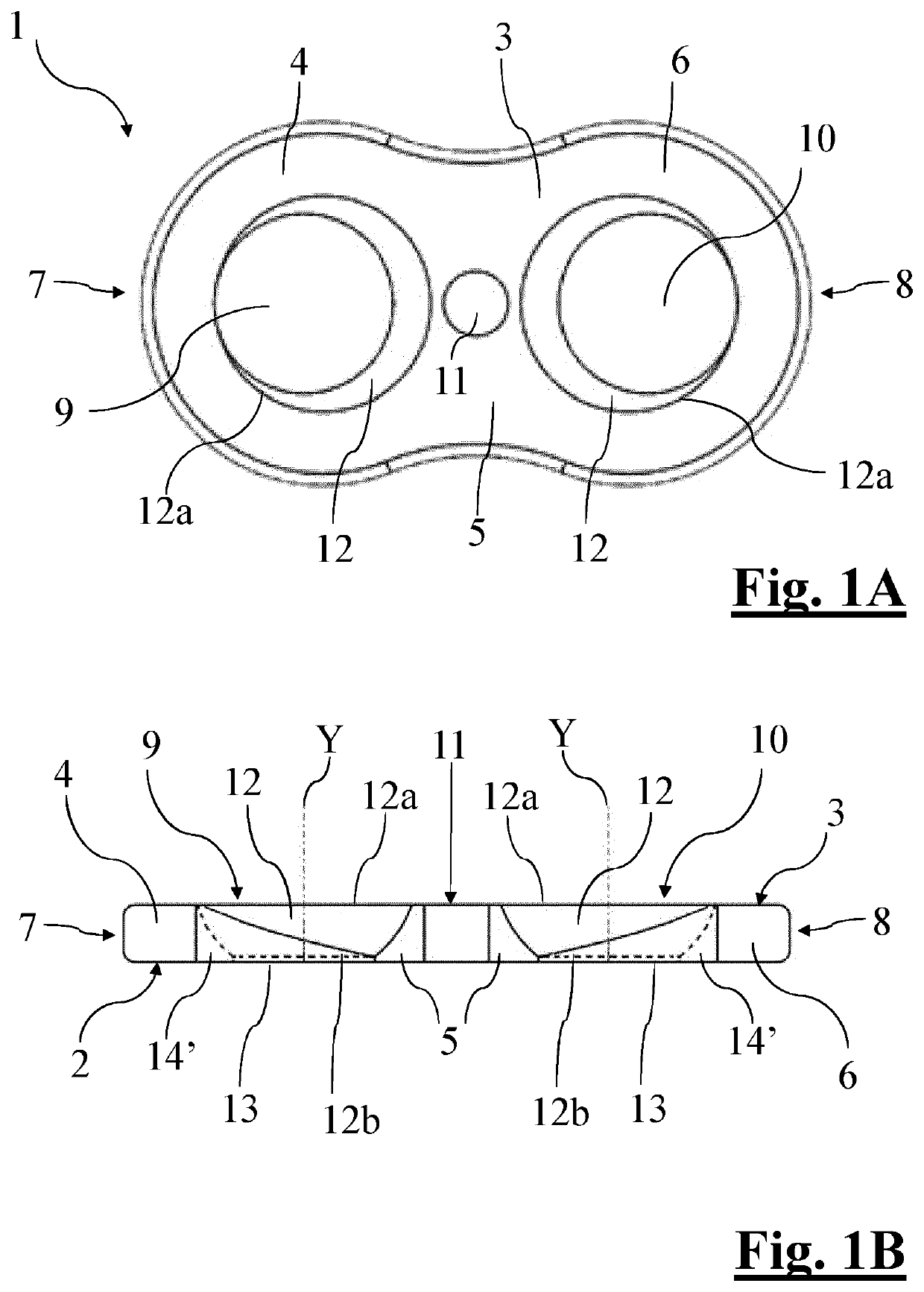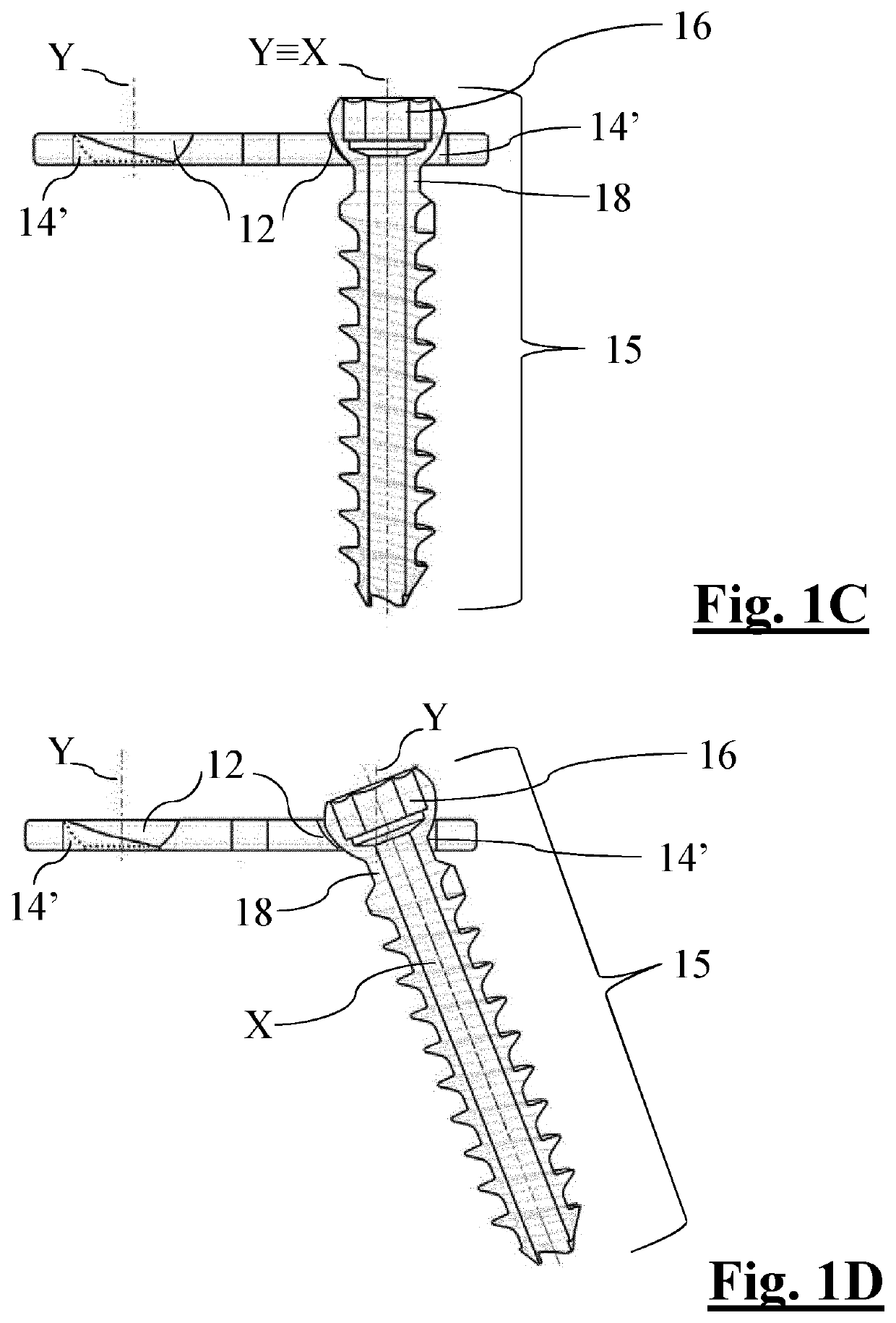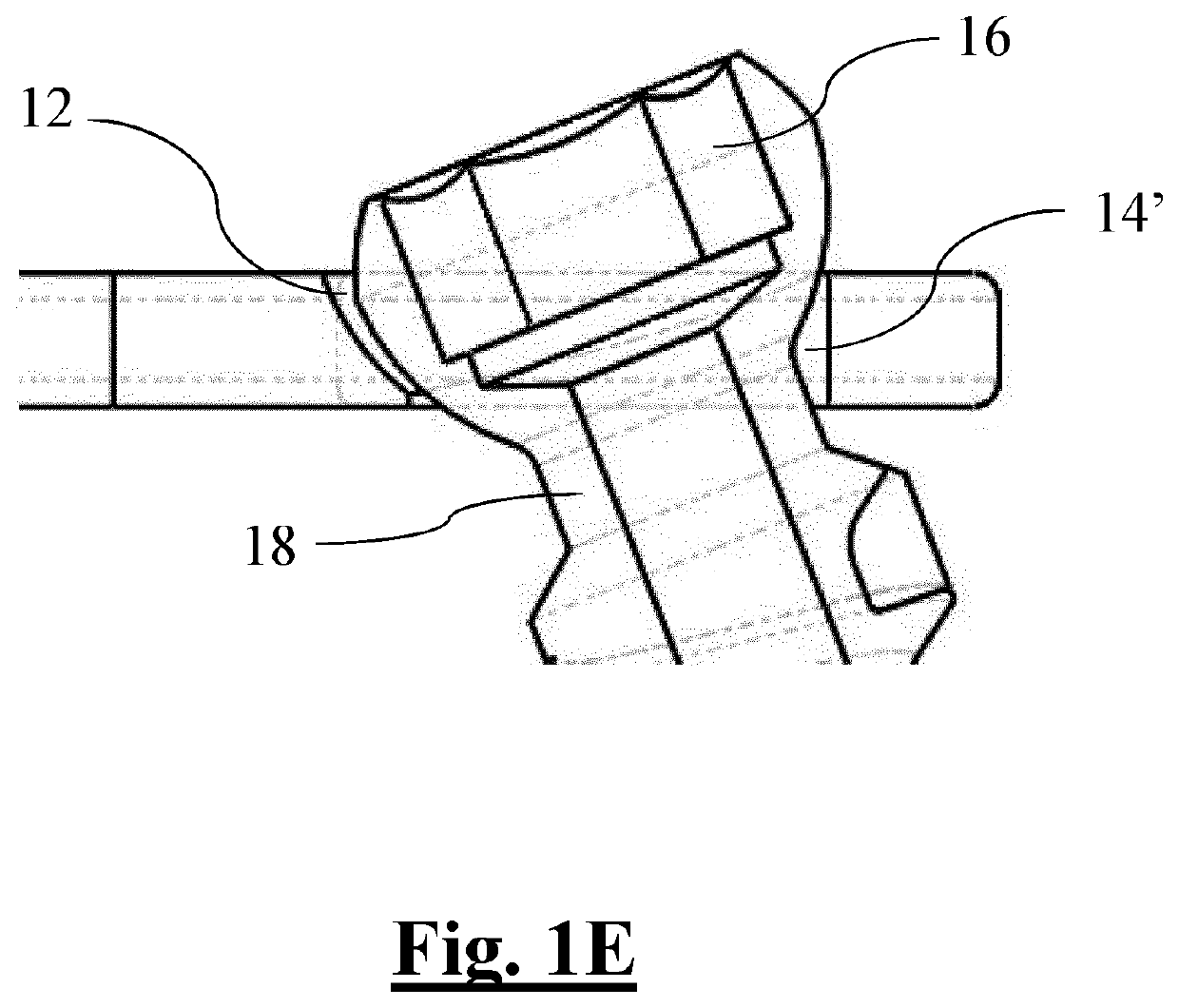Bone plate for epiphysiodesis
- Summary
- Abstract
- Description
- Claims
- Application Information
AI Technical Summary
Benefits of technology
Problems solved by technology
Method used
Image
Examples
first embodiment
[0090]A first embodiment described in FIGS. 1A-1E shows a recess hereafter referred to as an eccentric recess 14′.
[0091]The eccentric recess 14′ is defined by a hole, with a parallel axis and a diameter which is smaller than that of the entry section 12a of the cup-shaped seat 12. The hole is tangent to the outermost edge (i.e. closer to the respective end 7, 8 of the first 9 and second opening 10) of said entry section 12a.
[0092]The hole of the eccentric recess 14′ therefore defines a cylindrical widening, orthogonal to the bone plate 1, of the external periphery of the cup-shaped seat 12a, also defining an eccentric widening of the cylindrical hole 13 which in this embodiment is completely contained in the geometry of recess 14′.
[0093]Said eccentric recess 14′ is created by means of boring and slotting, creating a cylindrical through hole with a diameter which is smaller than that of the entry section 12a, with an axis parallel to axis Y of the cup-shaped seat 12, and being tange...
second embodiment
[0094]A second embodiment described in FIGS. 2A-2E shows a recess hereafter referred to as a slot-shaped recess 14″.
[0095]The slot-shaped recess 14″ is defined by a hollow which has a depth lower than the bone plate 1 thickness, and which extends lengthways from one point on the plate at one end 7, 8 to merge with the channel defined by the cup-shaped seat 12 and the cylindrical hole 13. The width of said hollow is preferably the same as the diameter of the cylindrical hole 13 that it connects with.
[0096]The slot-shaped recess 14″ is formed by removing material from the area surrounding the cup-shaped seat 12 at the end 7, 8. Such removal of material is achieved by means of face milling the bone plate 1 so as to create a lengthways hollow with semi-circular end which extends from the area close to the end 7, 8 and merges in the cup-shaped seat 12 and the cylindrical hole 13 below.
third embodiment
[0097]A third embodiment described in FIGS. 3A-3C shows a recess hereafter referred to as a tilted cylindrical hole recess 14′″.
[0098]The tilted cylindrical hole recess 14′″ is defined by a hole which merges within the cup-shaped seat, whose diameter is greater or at least the same as the diameter of the top non-threaded section 18 of the shank of the fixing screw 15 and which has an axis Z tilted by angle β with respect to axis Y of the opening 9, 10. The hole opens on the outer side periphery of the cup-shaped seat 12 and extends downwards and outwards, i.e. towards the respective end 7, 8, and emerges on the bottom surface 2 of the plate. The hole is merged with the cylindrical hole 13 for its entire length.
[0099]The tilted cylindrical hole recess 14′″ is formed by removing material from the area surrounding the cup-shaped seat 12 at the end 7, 8 by means of a boring operation.
PUM
 Login to View More
Login to View More Abstract
Description
Claims
Application Information
 Login to View More
Login to View More - R&D
- Intellectual Property
- Life Sciences
- Materials
- Tech Scout
- Unparalleled Data Quality
- Higher Quality Content
- 60% Fewer Hallucinations
Browse by: Latest US Patents, China's latest patents, Technical Efficacy Thesaurus, Application Domain, Technology Topic, Popular Technical Reports.
© 2025 PatSnap. All rights reserved.Legal|Privacy policy|Modern Slavery Act Transparency Statement|Sitemap|About US| Contact US: help@patsnap.com



